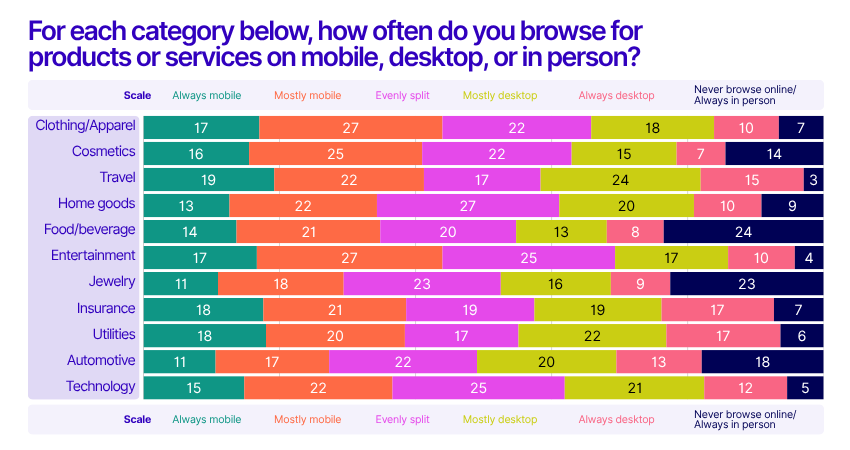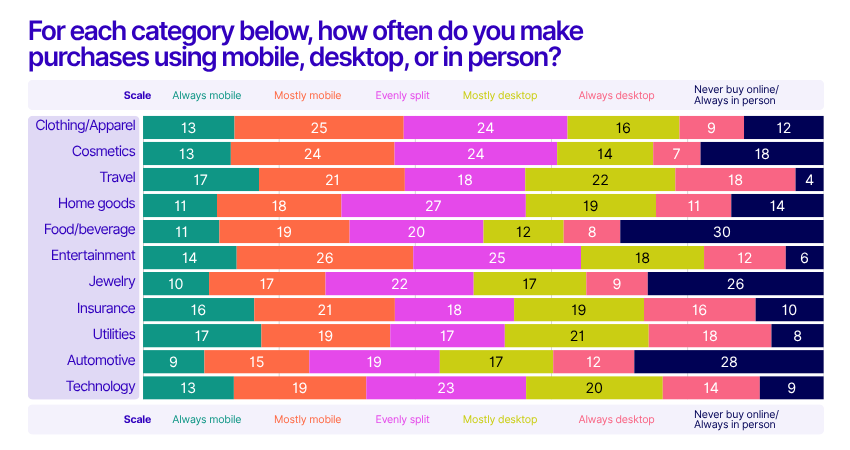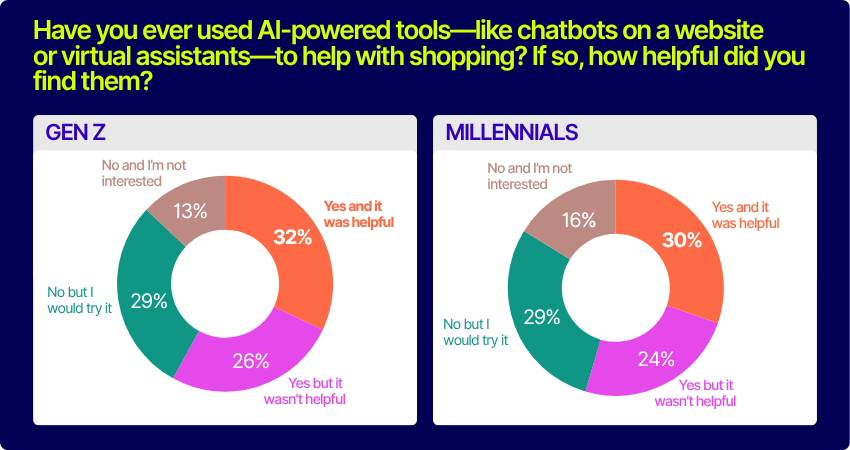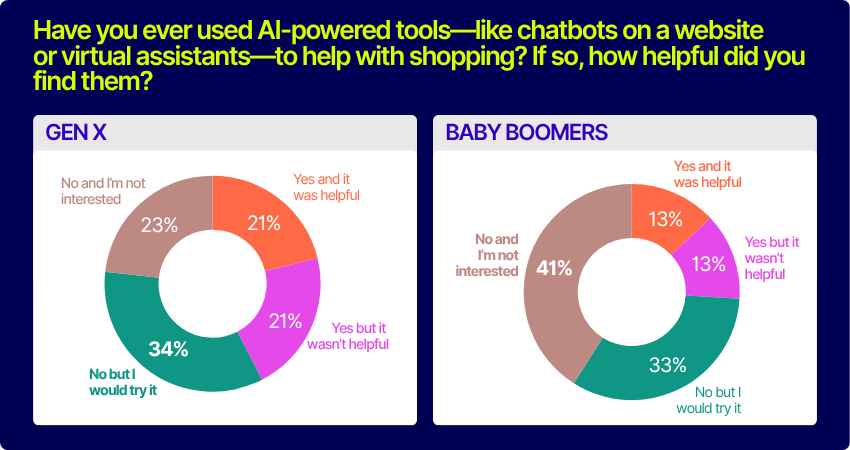E-commerce has completely changed the way shoppers interact with their favorite brands.
From the continued rise of mobile commerce to virtual-reality try-on tools and AI customer service, some consumer trends have proven to be evergreen while others fall out of fashion in a season. As e-commerce marketers, it can be hard to know when to chase a trend or stick to being consistent.
To help you better understand the mind of today’s consumers, we’ve broken down 10 key insights for e-commerce from our 2025 global report. Based on feedback from 4,000 consumers across the U.S., U.K., France, Italy, and Australia, this snapshot reveals how people discover new products, engage with AI, make purchase decisions, and much more.
1. Google Search is the first place for discovery
When it comes to starting an online shopping journey, Google Search is still king. Nearly two-thirds (63%) of global shoppers begin their hunt for a new product or service with a Google search.
This underscores the ongoing importance of SEO for e-commerce brands. If your product pages aren’t optimized, you risk missing out on a massive audience at the very first step of their journey.
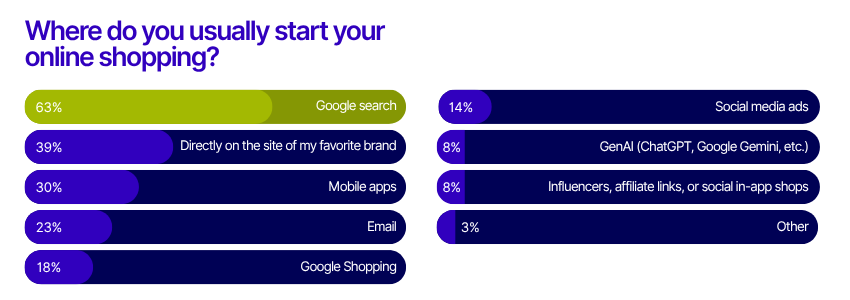
2. Mobile takes over, but desktop still matters
By the end of 2024, smartphones accounted for nearly 80% of global retail site traffic and over two-thirds of online orders. Mobile is now the primary device for browsing and purchasing in categories like clothing, cosmetics, and entertainment.
However, desktop still plays a significant role in sectors such as travel and utilities, especially among older generations. Brands should continue to prioritize mobile-first design, but not neglect the desktop experience—especially for high-consideration purchases.
3. Millennials vs. Gen Z: Mobile app habits
Generational differences are shaping the future of e-commerce. For Gen Z, mobile apps are the second most popular starting point for shopping (48%), just behind Google. Millennials, on the other hand, split their preference between apps and brand websites (both at 35%). This means younger shoppers are more likely to use apps for discovery, while Millennials are equally comfortable with apps and direct website visits.
Brands need more than just a mobile presence to capture Gen Z’s attention. They need apps built for exploration, speed, and flexibility. With Feature Experimentation and Rollouts from AB Tasty, teams can continuously test and optimize in-app experiences without a full redeploy, ensuring their app evolves alongside user expectations.
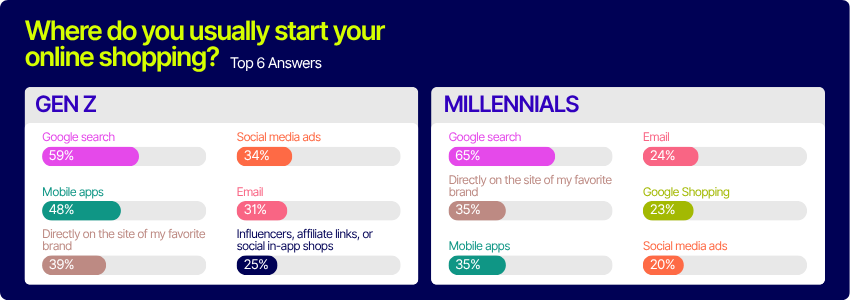
4. Comparison shoppers lead the pack
Not all online shoppers are the same. Our research found that the most common shopper persona is “comparison-oriented”—30% of respondents compare multiple products before making a purchase. Only 11% identify as “speedy” shoppers who want to check out as quickly as possible. The rest fall somewhere in between, with 21% being “review-oriented,” 20% “confident,” and 18% “detail-oriented.” This diversity highlights the need for flexible site experiences that cater to different decision-making styles.
If one size doesn’t fit all, then understanding your audience is the first step to building experiences that truly convert.
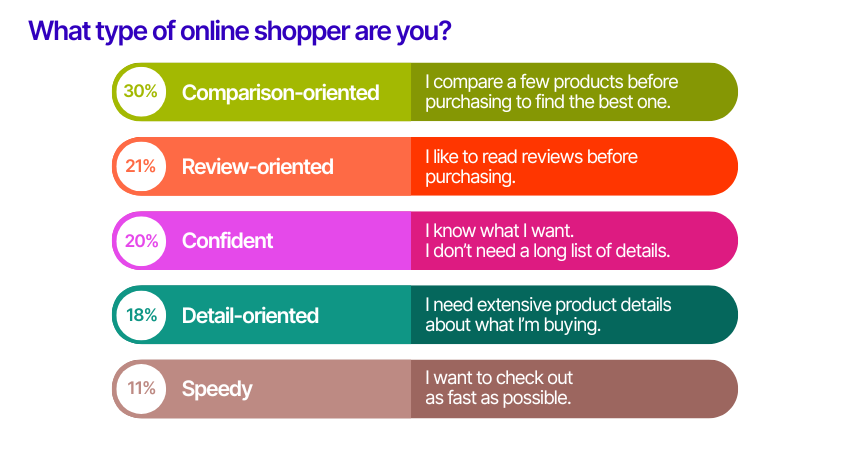
5. Reviews are more influential than discounts or brand names
When it comes to influencing purchase decisions, high-quality reviews top the list globally. Shoppers trust peer validation more than discounts, convenience, or even brand names. Written testimonials and customer photos are especially valued, providing the authenticity and detail shoppers crave.
Make sure your reviews are visible, filterable, and packed with real customer insights to boost trust and conversions.
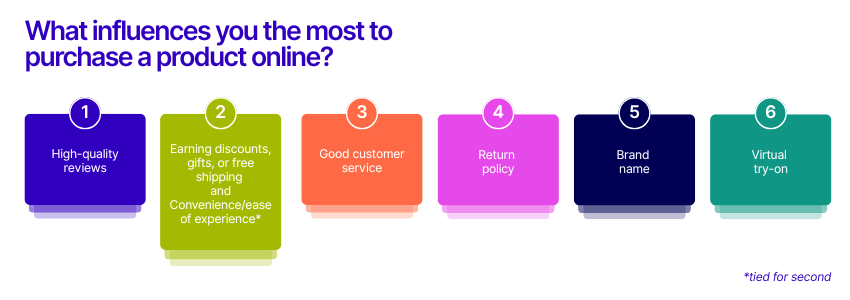
E-commerce moves fast. Get the insights that help you move faster. Download the 2025 report now.
6. The pop-up problem hurting conversions
Think you’re converting more by hitting new visitors with an email sign-up pop-up right away? Think again.
Too many pop-ups are the number one frustration for online shoppers worldwide, followed closely by slow-loading websites and difficulty finding products. While pop-ups can be effective for capturing leads or promoting offers, overuse can drive customers away. Use them strategically and ensure your site is fast and easy to navigate to keep shoppers engaged.
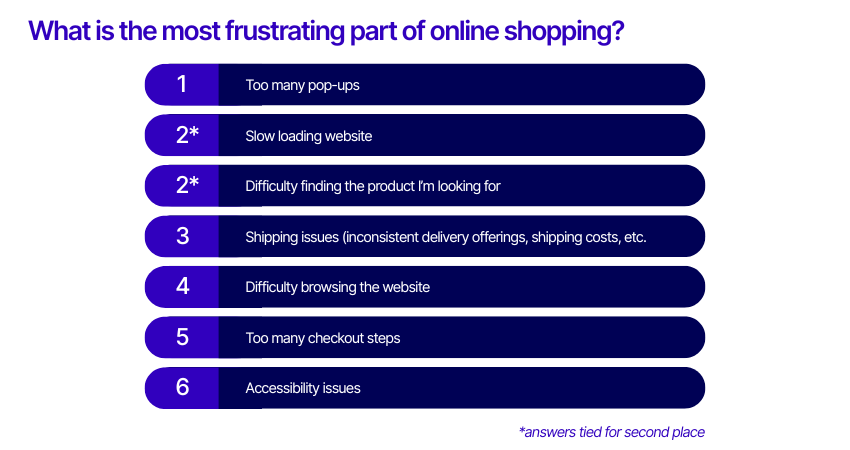
7. Loyalty is the key to better personalization
Personalization is more than just a buzzword—it’s a key driver of customer satisfaction and loyalty. The top way to make online shopping feel more personal, according to 35% of respondents, is by rewarding brand loyalty. Remembering preferences and suggesting relevant products also rank highly.
Brands that recognize and reward repeat customers with exclusive perks or early access to new products can turn shoppers into advocates.
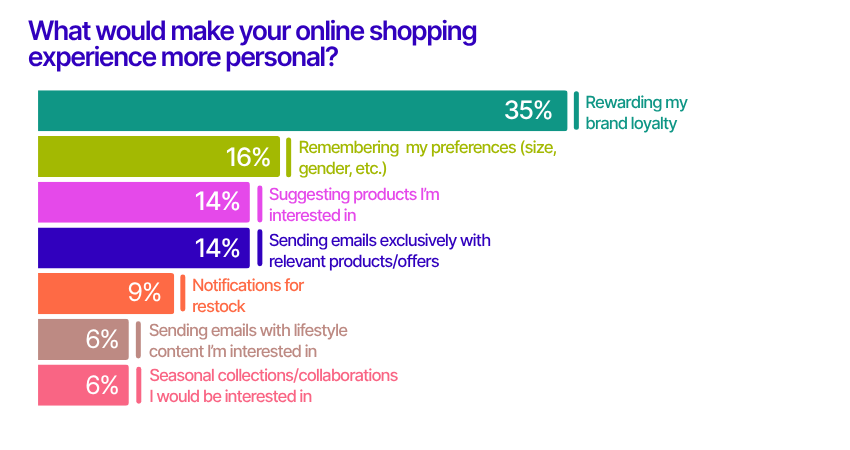
8. AI adoption is growing, especially among younger shoppers
AI-powered tools like chatbots and virtual assistants are gaining traction, but there’s still room for improvement. Just under a quarter (23%) of shoppers have used AI tools and found them helpful, while 32% haven’t tried them but are open to it. Younger generations are more receptive: 32% of Gen Z and 30% of Millennials found AI tools helpful, compared to just 13% of Baby Boomers.
To win over skeptics, brands need to ensure AI support is fast, relevant, and seamlessly integrated with human assistance.
9. Shoppers just want frictionless experiences
When asked what would most improve their online shopping experience, the top answer was simple: removing frustrations like pop-ups, bugs, and broken pages. Tracking shipping, improving product search, and speeding up the shopping process were also highly valued.
Before investing in flashy features, brands should focus on getting the basics right—smooth, intuitive journeys are what keep customers coming back.
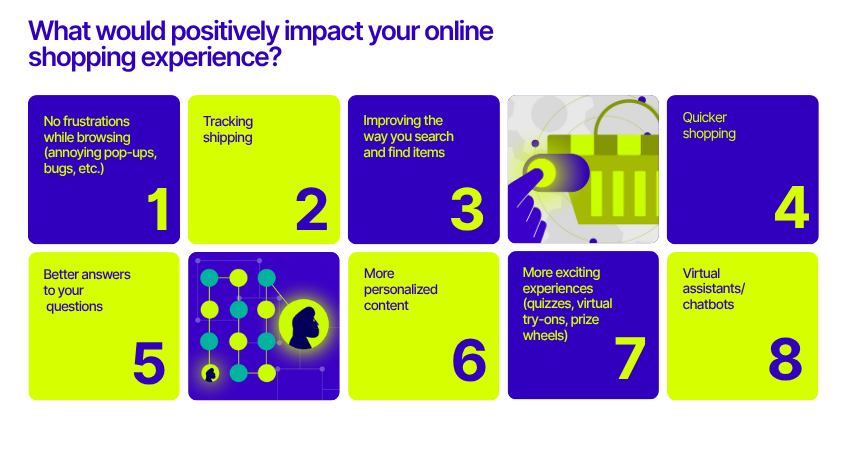
10. The gap between personalization and perception
Personalization is supposed to make shoppers feel seen—but only 1 in 10 consumers say their favorite brands truly “get” them. In fact, the most common answer was “somewhat,” as 39% of respondents said the messages and offers they receive are hit or miss. Another 34% said brands mostly deliver relevant content, but not always. For the majority, the digital experience feels inconsistent.
When personalization doesn’t land, it can come off as surface-level or even off-putting. The takeaway? Personalization isn’t just about using data—it’s about using it meaningfully, so relevance feels intentional, not accidental.

Conclusion
The bar for digital shopping experiences keeps rising, and today’s consumers are quicker than ever to click away when expectations aren’t met.
From discovery to checkout, each step in the customer journey has the potential to shape customer loyalty and long-term value. Our 2025 E-commerce Consumer report dives even deeper into generational trends, regional differences, and actionable strategies for optimizing your digital experience.
Ready to future-proof your e-commerce strategy? Download our report “Decoding Online Shopping: Consumer Trends for E-commerce in 2025” now.




